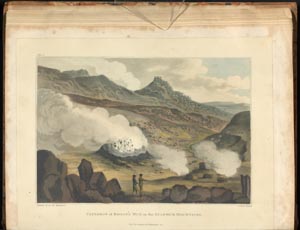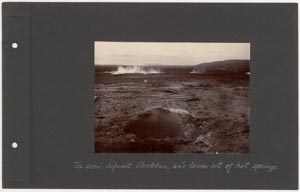Introduction
This exhibition examines how commercial images worked to create and transmit geographical knowledge during the nineteenth century, a period of rapid and extraordinary change in how people travelled, represented, and understood the world. After photography’s 1839 debut, it was seen as uniquely suited to the task of geographical description. Photographs were incomparably detailed and objective—the products of machines rather than human beings, whose powers of observation and documentation were limited, and propensity for exaggeration significant. Yet photographs were also different in appearance and style from other everyday pictures. By the mid-nineteenth century, the illustrated travelogue, with its often dramatic, narrative pictures, was a long-established form, and the conventions of landscape art, which emphasized pictorial harmony and balance, were deeply entrenched. Handmade prints that expressed these traits at the expense of realism did not disappear with the advent and industrial ascent of photography. They continued to illustrate most of the exploding number of books and journals dedicated to travel and global exploration, even while photographs circulated ever more widely through scholarly, popular, and private channels. What does this reveal about the roles of aesthetics and authenticity in the success of the Western project to teach audiences about faraway places?
The exhibition title “World Picture” is taken from a 1938 essay by Martin Heidegger. “The fundamental event of the modern age,” he writes, “is the conquest of the world as picture.” According to Heidegger, Enlightenment-era European intellects began to see the world as an image: something fixed, which exists in relation to the viewer. This world could be grasped through the quantification, classification, and (above all) observation of its elements, including human beings—in other words, through the methods of empirical science. Prints and photographs depicting little-known places participated in the development of scientific dialogues about those places. Equally important, they reflected and helped to shape those dialogues’ ideological dimension. Western nationalism, imperialism, and racism inflect almost all representations of land that circulated during the expansionist nineteenth century, overtly or covertly.
The exhibited objects are grouped in the table cases by area. Areas were selected based both on the relative fascination they held for nineteenth-century audiences, and on their importance within Cornell’s collections. (The university’s Icelandic collection, for example, is among the strongest in the world.) All objects are from Cornell’s Rare and Manuscript Collections or Johnson Museum of Art.

